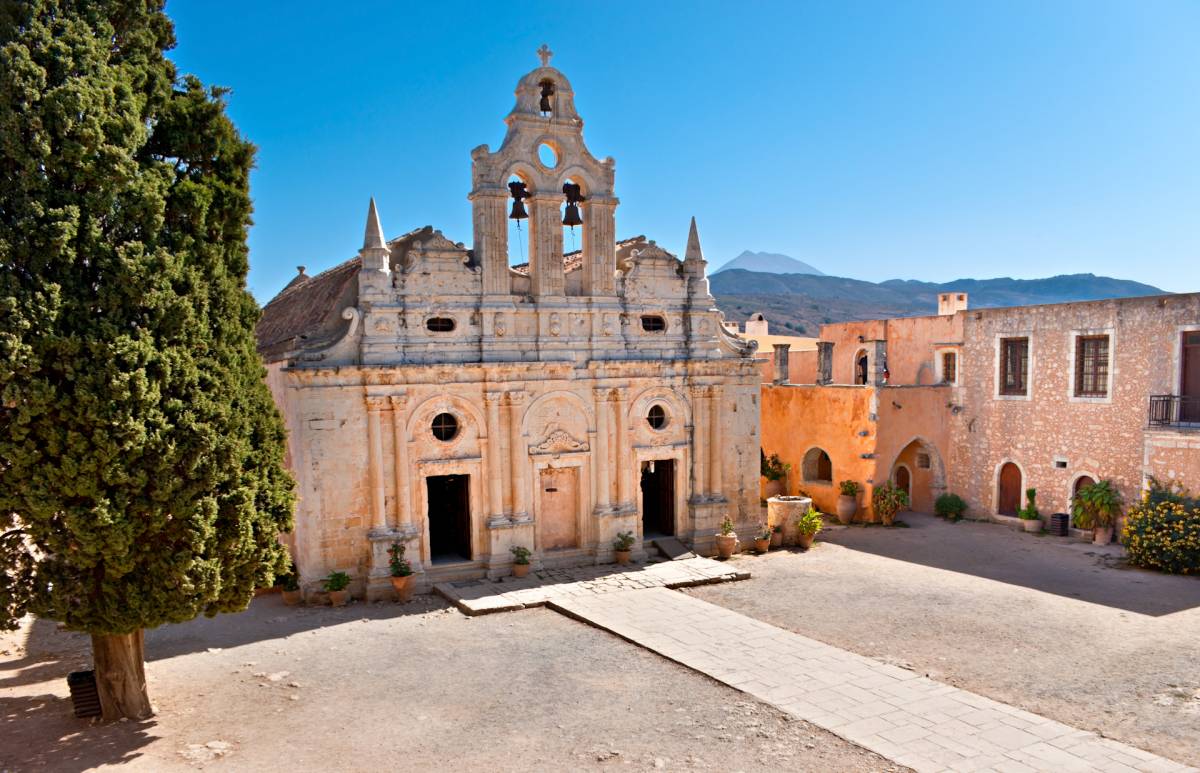
Just 23km east of Rethymno, on a fertile plateau on the slopes of Mt Psiloritis, the Arkadi Monastery has an architecture and history that will captivate you. Several versions exist as to how it was founded, including the most prevalent that it was named after a monk named Arkadios who established a monastery made up of a small chapel and a few cells in the 11th century AD.
The current fortress-like structure (it’s referred to as a monastery-castle) was completed in the 16th century AD and a handful of monks still live in the cells and continue its work.
The Arkadi Monastery has a rich history. During the 16th and 17th centuries, it served as a centre of learning and copying manuscripts in Crete, and it housed a gold-embroidery workshop whose fabrics and vestments were sold to churches and monasteries around the world.
But most importantly, the monastery is a symbol of freedom and sacrifice, with Greek and international artists such as Theodoros Vryzakis and Giuseppe Lorenzo Gatteri creating masterpieces depicting the heroics of the 964 rebel fighters, women and children who barricaded themselves inside the convent while under siege by the occupying Ottomans in 1866, finally setting the gunpowder depot alight rather than surrender to the enemy.
The monastery is open to the public, welcoming visitors and pilgrims, as well as visitors who choose to stay overnight in its cells. If you are in or near Rethymno during your holidays in Crete, a visit to the monastery is a must, if only to feel its unique aura.
Source: www.discovergreece.com